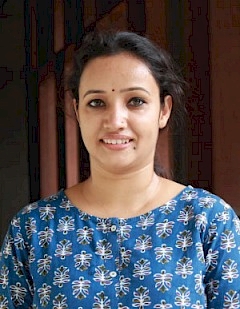Social Sciences

Divita Singh
Assistant Professor
PhD (IIT Gandhinagar)
+91.79.61911526
https://www.researchgate.net/profile/Divita_Singh
Research Interests: Cognition - Emotion Interaction; Emotion; Visual Attention
Profile
Dr Divita Singh is working as an Assistant Professor at the School of Arts and Sciences, Ahmedabad University. She did her Bachelor’s and Master’s degree in Psychology at Banaras Hindu University and PhD in Cognitive Science at Center for Cognitive and Brain Sciences, IIT Gandhinagar. Her PhD thesis focused on understanding the attentional control mechanism underlying temporal selection with a specific focus on the interaction between attentional blink and emotion-induced blindness. Following PhD, she worked as postdoctoral fellow at the Department of Cognitive Science at IIT Kanpur. During her postdoc, she worked on the effect of self on attentional prioritization. She uses behavioural experimental methodology to understand the intriguing realms of human cognition. Her specific area of research interest includes Visual Attention, Emotion, Self-referential processing, and working memory.
Research
My research lies at the intersection of cognition and emotion, with a particular focus on how emotional states influence cognitive processes such as attention, memory, and self-referential processing.
Publications
Journal Articles
- Parekh, H., & Singh, D. (2025). Influence of affective experiences and motivational orientations on consumer decision-making under risk: valence predicts risky choices for hedonic but not utilitarian products. Current Psychology, 1-12.
- Singh, D., Pandya, M., Chakraborty, D., & Mehta, K. (2025). Out of sight, out of mind: Spatial cueing reduces the attentional cost of emotional distractors in emotion-induced blindness. Journal of Vision, 25(8):18, 1–9.
- Singh, D., & Sunny, M. M. (2023). Spatial distribution of emotional attentional blink under top-down attentional control. Cognitive Processing, 24(1), 153-159.
- Singh, D., & Karnick, H. (2022). Self-prioritization effect in children and adults. Frontiers in Psychology, 13, 726230.
- Singh, D., & Sunny, M. M. (2020). Attention interacts with emotion to drive perceptual impairment of images in an RSVP task. Collabra: Psychology, 6(1).
- Singh, D., & Sunny, M. M. (2017). Emotion Induced Blindness Is More Sensitive to Changes in Arousal as Compared to Valence of the Emotional Distractor. Frontiers in Psychology, 8, 1381.
- Singh, D., & Sunny, M. M. (2015). (No) Role of Emotion in Emotion-Induced Blindness. Perception, Vol. 44(S1) 1–415.
Teaching
- PSY101 - Introduction to Psychology
- PSY210 - Cognitive Psychology
- PSY416 - Psychology of Emotions
